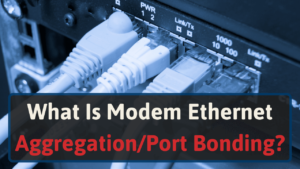I’ve done hours of research about IPv4 and IPv6, so you don’t have to.
Read on, as I explain each IP version and how they differ from each other.
Let’s get started.
The Main Differences Between IPv4 and IPv6
IPv4 and IPv6 are both Internet Protocols addresses. Networks use them for the identification of any machine that connects to them. They perform the same basic tasks but do so in different means.
For example, they have different addressing methods, network configurations, mapping, and speeds.
Here are the major differences between IPv4 and IPv6:
| Criteria | IPv4 | IPv6 |
| IP address size | 32-Bit | 128-Bit |
| Addressing method | Numeric | Alphanumeric |
| Configuration type | DHCP or manual | Autoconfiguration |
| Speed | Faster since it is more common | Slower due to larger packets and less optimization |
| Security | IPSec | IPsec (can evolve to be better than IPv4) |
| NAT | Yes | No |
| Mobile device compatibility | Not suitable (uses dot-decimal notation) | Well suited (uses hexadecimal, colon-separated notation) |
| Packet size | 576 bytes, fragmentation optional | 1208 bytes without fragmentation |
What is an Internet Protocol Address?
IP (Internet Protocol) addresses allow all computers to communicate over the internet.
It is the most critical communication protocol. IP routes and addresses information packets for networking devices across networks. These devices include computers, laptops, etc.
There are two types of internet protocol: IPv4 (IP version 4) and IPv6 (IP version 6).
What is IPv4?
IPv4 is a core protocol of packet-switched networks, including the internet. It was first deployed in the early 1980s and still routes most Internet traffic today.
IPv4 makes it possible for our computers and other devices to connect to the Internet.
It is the backbone of the Internet and enables internetworking by using a logical addressing system. It also performs routing.
This means it forwards packets from the host source along other routers. Then, the final destination host on another router.
It uses a 32-bit address and thus has over 4.2 billion unique addresses.
When a device connects to the Internet with IPv4 it gets its unique IP address (192.158.111.55, for example) – this is the device’s unique identifier.
While 4.2 billion unique addresses may sound like a lot, they can all get used up. Especially with the growing number of Internet-capable devices. One reason engineers developed IPv6 was to fill in the gap with more Internet addresses.
Benefits of IPv4
While IPv4 is the older Internet Protocol, it certainly isn’t past its prime. As we mentioned already, over 90% of internet traffic happens through IPv4.
Besides its extensive usage, it has many more benefits:
- It is a connectionless protocol (information is sent without varying a receiver exists)
- Supported by millions of devices
- Uses and requires less memory
- Easier at remembering addresses
- Can connect diversified devices with a simple virtual communication layer
What is IPv6?
Internet Protocol version 6 (IPv6) was started in 1999 to address the concern of IP address demand exceeding the amount of IPv4 address available (4.2 billion).
Just like IPv4, IPv6 enables data transfer and communication over networks.
IPv6 uses 128-bit IP addresses, which means it supports 2^128 internet addresses in total – which is 340,282,366,920,938,463,463,374,607,431,768,211,456. [1]
As you can see, this is far more available IP addresses than IPv4’s paltry 4,294,967,296 addresses.
Even though the plan was to eventually phase out IPv4 and fully replace it with IPv6, they will likely both be around for quite some time since billions of devices already support iPv4.
Benefits of IPv6
The increased number of available IP addresses isn’t the only benefit IPv6 brings to the table. It has many other markable improvements, including
- Multicast addressing– reduces network traffic. Sends high bandwidth packet flows to many destinations at the same time
- Autoconfiguration– ability to generate an IPv6 address during power-up. (A manual addition of IPv4 addresses is common)
- Connects to many networks simultaneously. It can assign many IP addresses to a single device. Completed with advanced configuration and interoperability capabilities
- QoS (Quality of Service) support
- No NAT (Network-Address Translation)– Leads to higher speeds than IPv4 in some cases
IPv4 and IPv6 Comparison
IPv4 and IPv6 currently coexist. Many newer devices are capable of communicating and addressing with both IP versions.
Now that we know about the features, advantages, and differences of each, let’s compare them. We look at each from a speed, configuration, and security perspective.
Speed
For the most part, IPv4 and IPv6 achieve the same speed. Network engineers have run various speed tests. [2] In these tests, sometimes IPv4 won the tests, sometimes IPv6 won.
Yet, IPv6 has the capability of being faster the faster IP since it doesn’t use NAT. On the other hand, IPv6 transfers larger packets, making it slower.
Since IPv4 has been around so long, it is better optimized, making it a great contender to IPv6.
In the future, IPv6 networks will likely be better. They will get faster with tuning, have better optimization, and achieve other improvements.
Network Configuration
IPv4 uses DHCP or manual configuration to add IP addresses to a network. DHCP stands for Dynamic Host Configuration Protocol. It is automated and works great.
But, when you need to use manual configuration, it could lead to frustrations and issues.
IPv6 completely side steps manual configuration hangups by using Autoconfiguration.
Security
IPv4 and IPv6 can both have excellent security (especially when you keep up with updates). IPv6 requires Internet Protocol Security (IPSec) but is optional for IPv4.
IPv6 has end-to-end encryption and a more secure name resolution. This makes it a more difficult target of network attacks.
But, a properly configured IPv4 network can be as secure or more secure than an IPv6 network. That is if network providers and end-users use IPSec and put in place new updates.
Conclusion
IPv4 and IPv6 are coexisting Internet Protocols. They allow addressing and communication of devices over networks. IPv4 is older and is still used by over 90% of devices worldwide.
IPv6 is newer and can handle more addresses. It has the potential for better security, faster speed, and easier configuration.
Know when you are up to date about the difference between IPV4 and IPV6, then you might want to check out our article on Wi-Fi 5 vs. Wi-Fi 6. To learn the difference between the two Wi-Fi standards.







